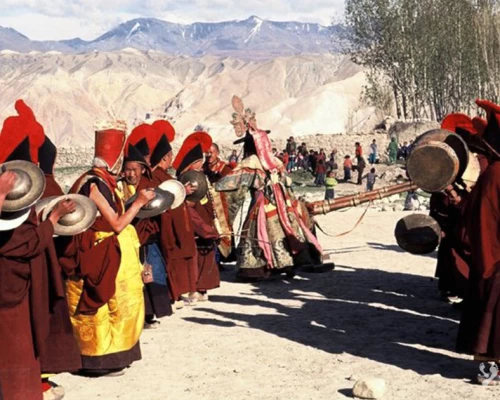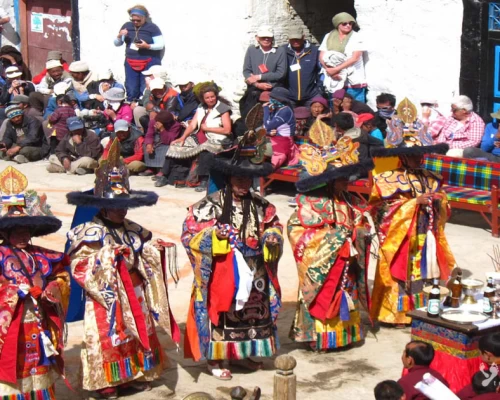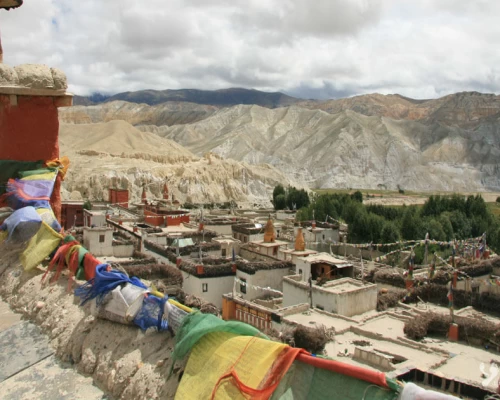The Mythical TIJI Festival Mustang
According to the Tibetan calendar, the upcoming Tiji festival will take place from May 24 to 26, 2025
Traveling is not only about how far you go; it’s also about how much you know. While in Nepal, go to the Himalayas; and learn about the Himalayan people, their culture, food, attire, and festivals. The culture and tradition of Nepalese in the high Himalayas is quite similar to that of Tibet. The unrolling of Thangka and the mask dances are common cultural practices in Nepal Himalayas as well as Tibet.
Tiji Festival celebrated in Lo-Manthang of the Upper Mustang region of Nepal, is among the most sought-after festivals in Mustang.

Once known as "forbidden Kingdom" Lo-Mantang is now a Rural Municipality of Lo Manthang. The festival is celebrated in May or June as per The Lunar (Tibetan) calendar. The festival was started by King Samduk Rabten in the 17th Century to celebrate the victory of Lord Buddha’s Incarnation, Dorje Sonam, over a demon called "MAN TAM RU'' a vicious dangerous Creature that consumed human flesh and brought drought and storms. This festival is celebrated for three days where Lamas draped in their traditional attire from the “Choedhe Monastery” offer Prayers for World Peace and also for overcoming any obstacles in the future.
The first day of the festival is marked to represent the harassment done by the MAN TAM RU through a dance called "Tsa Chham" followed by the masked demons swinging, wooden swords wildly toward the terrified spectators. Mustang Royal family and all the villagers of the seven provinces of Upper Mustang (Lo Chhodun) participate in this sacred dance with ritual.
Similarly, on the second day of the festival, Lamas perform a dance called Nga Chham, portraying the birth of Dorje Sonam, an incarnation of Lord Buddha, as a son of the Demon, There are peaceful steps of dance in the first activity (Toele).
As well as on the third day of the festival represents an attempt to return the Kingdom to Lord Buddha from the demon's hand. The Lamas chant prayers and perform almost 52 separate religious dances to chase demons from Lo Manthang, Lamas use ancient muskets to fire an arrow to the demon. Five more demons are thrown into the sand to signify that the city has got rid of the demons.
At the end of the festival, there is an exchange of greetings between the King and Khempo and other monks. The people of Mustang express their great luck and fortune at being able to witness yet another Tiji Festival and they pray that many more good years follow.




(1).webp)




